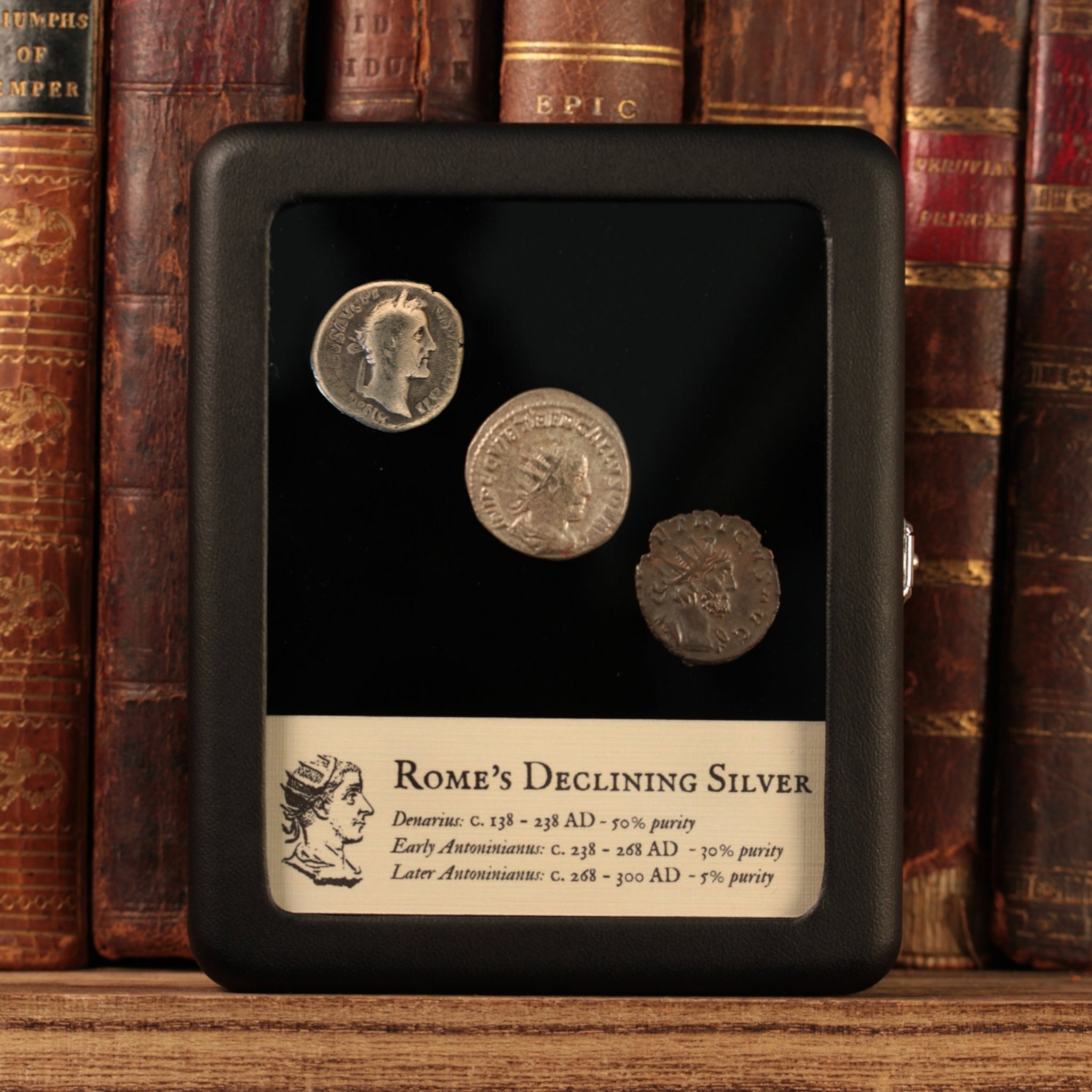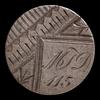The Decline of Roman Silver, Three Coin Collection – c. 193 to 300 CE – Roman Empire Pices Cheap Pice
This set of three coins shows the declining silver purity of Roman currency during the 3rd century CE. The coins included and their silver contents are described below:
- Denarius: circa 138 – 238 CE, about 50% purity
- Early antoninianus: circa 238 – 268 CE, about 30% purity
- Later antoninianus: circa 268 – 300 CE, less than 5% purity
After promising to increase the Roman army’s pay, Emperor Caracalla faced the need to create more currency. However, to make more of the existing silver coinage like the denarius, the empire would have to use more silver than it had access to. So Caracalla made a bold choice: he created a coin worth two denarii, called the antoninianus, but lowered the silver purity to only include 1.5 denarii worth of silver in each coin.
Unfortunately for Caracalla, debasing the silver content of currency was not without consequence in ancient Rome. It quickly led to runaway inflation, leading the Roman government to produce even more coins with even less silver to compensate. Although the Roman antoninianus was originally minted at about 40% purity, by the 270s the coins were less than 5% silver and almost entirely made from bronze.
This was a contributing factor to the Crisis of the Third Century, a tumultuous period spanning from 235 to 284 CE that almost caused the collapse of the Roman Empire. In addition to a failing economy, the empire grappled with internal political strife, military coups, and relentless invasions from external forces. By 268 CE Rome had split into three separate states: the Gallic Empire in the west, the Palmyrene Empire in the east, and the Roman Empire proper. Chaos erupted as at least 26 different claimants to the title of emperor emerged, only ending in 284 when Diocletian reasserted the power of Rome’s central government.
Each coin comes with a Certificate of Authenticity.
Be the first to review “The Decline of Roman Silver, Three Coin Collection – c. 193 to 300 CE – Roman Empire Pices Cheap Pice” Cancel reply
Related products
Uncategorized
Uncategorized
Uncategorized
Uncategorized








Reviews
There are no reviews yet.